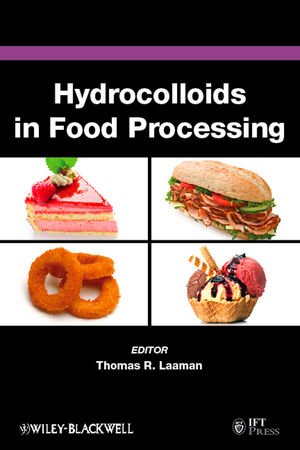Hydrocolloids in Food Processing book
Par hinton kerri le mercredi, octobre 14 2015, 00:52 - Lien permanent
Hydrocolloids in Food Processing by Thomas R. Laaman


Hydrocolloids in Food Processing Thomas R. Laaman ebook
Publisher: John Wiley and Sons
ISBN: 0813820766, 9780813814490
Format: pdf
Page: 350
Buy Hydrocolloids in Food Processing Price Discount. Did you know that flour is a hydrocolloid? Hydrocolloids - in which the colloid particles are dispersed in water - are already used as thickeners and gelling agents in food. Amid sky-high prices and shortages of guar gum driven by an unprecedented surge in demand, food formulators have renewed focus on finding replacers and DuPont is championing use of alternative hydrocolloids. Herein, we propose an elegant and novel approach for the delivery of nutraceuticals in their active form using hydrocolloid matrices that are inexpensive and non-toxic with generally recognized as safe (GRAS) status. >>> On Sale Price Hydrocolloids in Food Processing for best price 2013. Natural oat fiber is produced from food-grade oat hulls through a proprietary, chemical-free process, turning organic hulls into various organic fibers. AMITY INSTITUTE OF FOOD TECHNOLOGY CREDIT SEMINARTOPIC- Food Hydrocolloid PRESENTED BY- Sujata Mishra E.NO. It uses foams, syringes, dehydrators, centrifuges, anti-griddles, liquid nitrogen, and various natural gums and hydrocolloids produced by the commercial food processing industry, to alter the texture and appearance of food. Protection for nutraceuticals during the delivery process,' says Janaswamy. A Purdue University food scientist has developed a way to encase nutritional supplements in food-based products so that one day consumers might be able to sprinkle vitamins, antioxidants and other beneficial compounds right onto their meals. In Hydrocolloids in Food Processing, a group of the most experienced and impartial experts explains what stabilizers should be used and how they should be used, food product by food product. The agreement includes development, production, distribution, marketing and sale of the hydrocolloid to the global food industries. Several chapters are dedicated to the major food processing applications: fruit and vegetables, grains, meat, seafood and food hydrocolloids, and the effects on nutritional and quality parameters will be reviewed throughout.